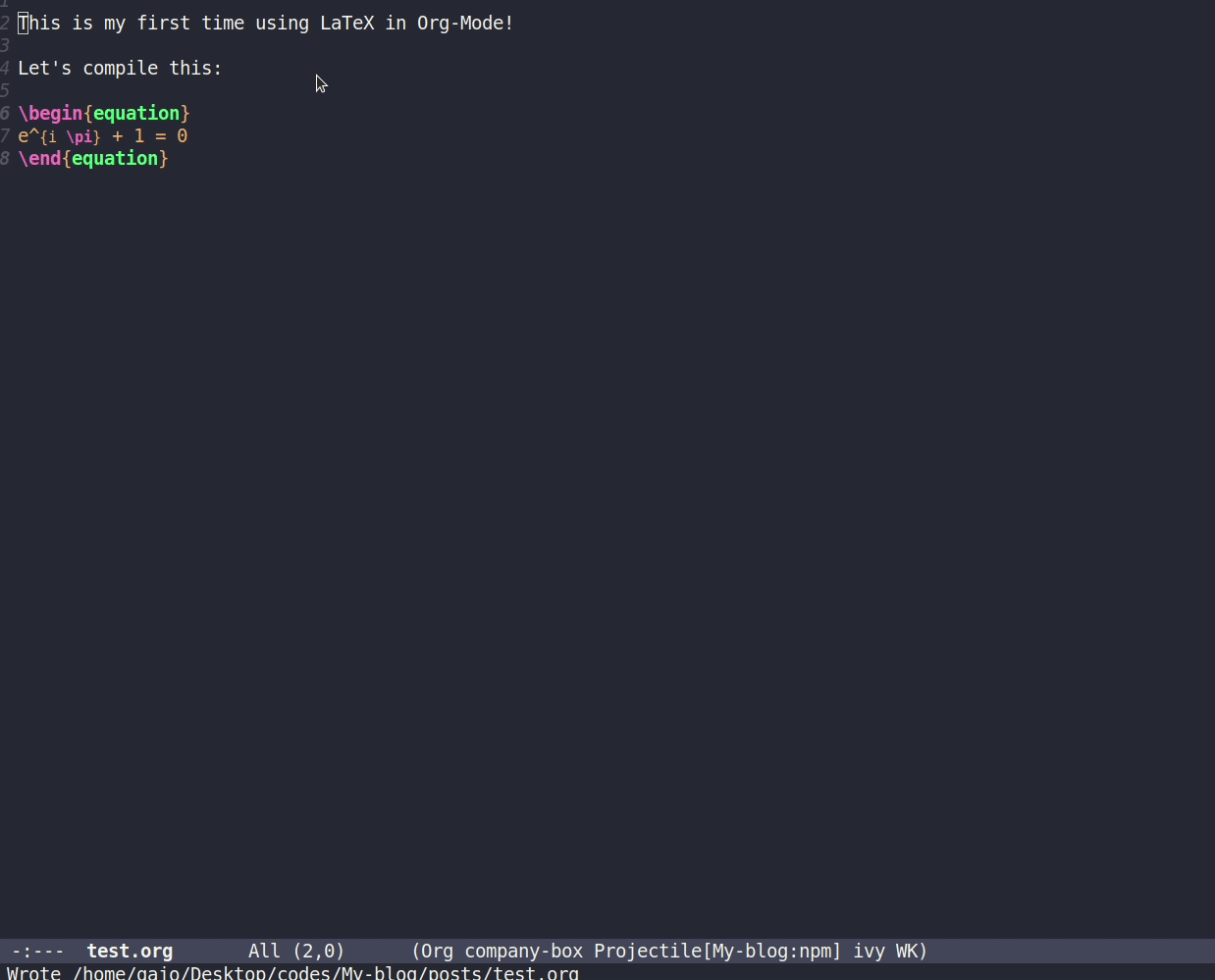GNU Emacs Org-Mode and LaTeX
Introduction
Recently, I started taking some classes from the ElvenWorks Bootcamp on SRE (Site Reliability Engineering), and among the extra lessons (they share these before the beginning of the Bootcamp itself), I felt the necessity of writing some custom formulas in my notes.
Since I'm using GNU Emacs + Org-Mode + Org-Roam to keep my notes organized, and I had some previous knowledge of LaTeX, I decided to combine both of this knowledge in order to make my notes more effective and powerful.
This post was created to share my path in this journey, and some clarifications for the official docs, which I think could be more clear.
Definitions
Before diving into the article content, I decided to add this small section to present the definitions of some terms used.
GNU Emacs
- Official link.
GNU Emacs is an extensible, customizable, free/libre text editor - and more.
At its core is an interpreter for Emacs Lisp, a dialect of the Lisp programming language with extensions to support text editing.
GNU Emacs is a very powerful tool, which is being developed since ~ 1985. Although it's age, this tool is still maintained by several open source contributors, which are constantly adding new features.
Some even call it a dream come true.
Org-Mode
- Official link.
Org Mode
Your life in plain text
A GNU Emacs major mode for keeping notes, authoring documents, computational notebooks, literate programming, maintaining to-do lists, planning projects, and more - in a fast and effective plain text system.
Org Mode is a tool that many consider the killer feature of Emacs.
The description I got from the official docs and shared previously explains it in a good way.
Org-Roam
- Official link.
A plain-text personal knowledge management system.
Org-roam is a package that must be used along with Org-mode. It applies the Zettelkasten Method for note keeping, organizing the notes in a reasonable way.
LaTeX
Finally, LaTeX is a software system for document preparation, which is very popular in the academic world, due to its power in expressing complex formulas in a good look manner.
You can read more about it in its Wikipedia article: link.
The Docs
First of all, in my journey I consulted the following links from the Org-Mode documentation:
- org-tutorials: LaTeX preview in org
- org-manual: Embedded LaTeX
- org-manual: LaTeX Fragments
- org-manual: Previewing LaTeX Fragments
- org-manual: Using CDLaTeX to Enter Math
Consider reading it to get more deeper knowledge that I did not touch on in this short article.
The Goal
My initial goal in this journey was to be able to compile the LaTeX formulas, ideally in an automated way, and display the result in the body of the document I'm writing.
With this in mind, I went directly to the docs mentioned before. I was pretty happy when I found that Org-mode provided the facility I wanted out of the box.
But, in reality, it was a bit tricky to make it work.
In essence, we can use the command org-preview-latex-fragment, which is bound to C-c C-x C-l. This command will process the LaTeX code and produce a PNG image which is later shown in the body of the note.
The command mentioned before works like a toggle button, so, if you want to disable the image preview and work again in the LaTeX code, you can simply call it again with the cursor in the preview image.
dvipng
According to the docs, there are two methods we can use for LaTeX preview: dvipng and imagemagick. I decided to pick the first, for no special reason other than it appearing first in the documentation.
Since I'm using a Debian-based GNU Linux distribution, it was required to install the dvipng package. It's pretty straightforward to do using the apt package manager:
sudo apt install dvipng
The next step is to configure the Org package to use this tool. In order to do it, add this configuration to your initialization script:
(setq org-latex-create-formula-image-program 'dvipng)
Now, create a new org-file (extension .org), and add the following block of code:
This is my first time using LaTeX in Org-Mode!
Let's compile this:
\begin{equation}
e^{i \pi} + 1 = 0
\end{equation}
Now, put your cursor in the equation content and hit C-c C-x C-l.
You'll get something like this:

That's it!
You can change the look of this built image in order to make it more readable, for example:
; increase the size
(setq org-format-latex-options (plist-put org-format-latex-options :scale 2.0))
; highlight latex code in org-mode
(setq org-highlight-latex-and-related '(native))
Automate the Preview Generation
According to the documentation, you can automatically turn on the LaTeX preview feature by adding this property to the Org file:
#+STARTUP: latexpreview
And, to disable it:
#+STARTUP: nolatexpreview
Conclusion
In this article, I have presented a quick overview of the LaTeX visualization features available in GNU Emacs + Org-Mode. The idea to write about it was the lacking of good and direct examples that I found while reading the documentation and making my initial research.
I believe that with this content, now it's easier to start exploring and using this tool in your own GNU Emacs setup since we have a working example to start.
For me, initially I thought it would be required to wrap the LaTeX configuration in the #+BEGIN_SRC latex block, and during my tests, this feature was never working, but, fortunately, I found a working example in 4Chan with the code to look at.
There I noticed that the source block was not used.
Finally, if you want to dig deeper into this topic, please consult the official documentation. The links mentioned in The Docs section are a very good start.